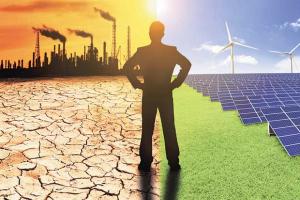Friday Nite Videos | December 27, 2019
Portside
Rhiana Gunn-Wright, the policy lead for the Green New Deal, debunks some of the biggest myths about the policy. Critics say the Green New Deal can't be done in ten years. But what does the science say?
 In these times of climate change denial, macho military chest-beating, stagnant wages, and soulless extremes of wealth and poverty, light-bearing cracks are all that we have. The northern Great Plains, likely the richest wind regime in the world, the potential of tribal wind power exceeds 300 gigawatts across six states, according to the Department of Energy. This motherlode is equivalent to about half of the current electrical generating capacity in the United States.
In these times of climate change denial, macho military chest-beating, stagnant wages, and soulless extremes of wealth and poverty, light-bearing cracks are all that we have. The northern Great Plains, likely the richest wind regime in the world, the potential of tribal wind power exceeds 300 gigawatts across six states, according to the Department of Energy. This motherlode is equivalent to about half of the current electrical generating capacity in the United States.
 The investment commitment made by the Chinese, combined with Mr. Trump’s moves, means jobs that would have been created in the United States may instead go to Chinese workers... Greenpeace estimates that China installed an average of more than one wind turbine every hour of every day in 2015, and covered the equivalent of one soccer field every hour with solar panels.
The investment commitment made by the Chinese, combined with Mr. Trump’s moves, means jobs that would have been created in the United States may instead go to Chinese workers... Greenpeace estimates that China installed an average of more than one wind turbine every hour of every day in 2015, and covered the equivalent of one soccer field every hour with solar panels.
Spread the word